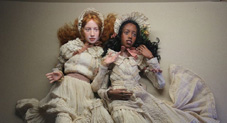
ArtDoll Tbilisi 2018
By Keti Donadze
Friday, October 26
Museum of Modern Art and the Folklore State Center of Georgia will present the Festival ArtDoll Tbilisi for the second with the support of Check-in Georgia.
The works of Georgian and foreign artists will be presented at the festival. Doll designers will gather from Azerbaijan, Ukraine, Russia, Czech Republic and Estonia in Tbilisi at the second International Festival of ArtDoll Tbilisi.
The festival will take place at the Zurab Tsereteli Museum of Modern Art and Folklore on November 2-4.
The festival organizer Yulia Sorokina talked about the festival and international participants.
“Our goal is to introduce dolls to Tbilisi, show the infinite possibilities of fantasy to them, to love our country with foreign masters, show the beauty of our magnificent capital and hospitality,” she said.
Famous masters will present their works in Tbilisi: Elena Tuminskaia, Michael Zaikov, Irina Cherepanova, Oksana Voropa, Parviz Vusenov, Irina Kodresko-Lumer, Vladlena and others.
The exhibition will feature the doll sale.
Materials for making authors’ dolls vary from a simple paper-mache to refined porcelain, but it doesn’t affect a process of the object.
It is worth mentioning that the technical implementation of the work and the plan is the most important part.
The official opening will take place on November 2.
Ukrainian artist Victoria Seitelman will hold a master-class within the framework of the festival.
The festival organizer is Union of Georgian Dolls, which has a partnership with Folklore State center. The project is implemented with the financial support of the Ministry of Education Science, Culture and Sport of Georgia, Tbilisi City Hall and the National Tourism Administration.
Modern art museum primarily showcases the work of Zurab Tsereteli, with other temporary exhibits.
Numerous handmade dolls and puppets created by crafters from around Georgia are exhibited annually.
The Puppet Museum in Tbilisi was founded in 1937 by famous children’s author Tinatin Tumanishvili. By the end of the 20th century, the museum was robbed and had not been working for almost sixteen years, but was reopened for the public in 2008.


